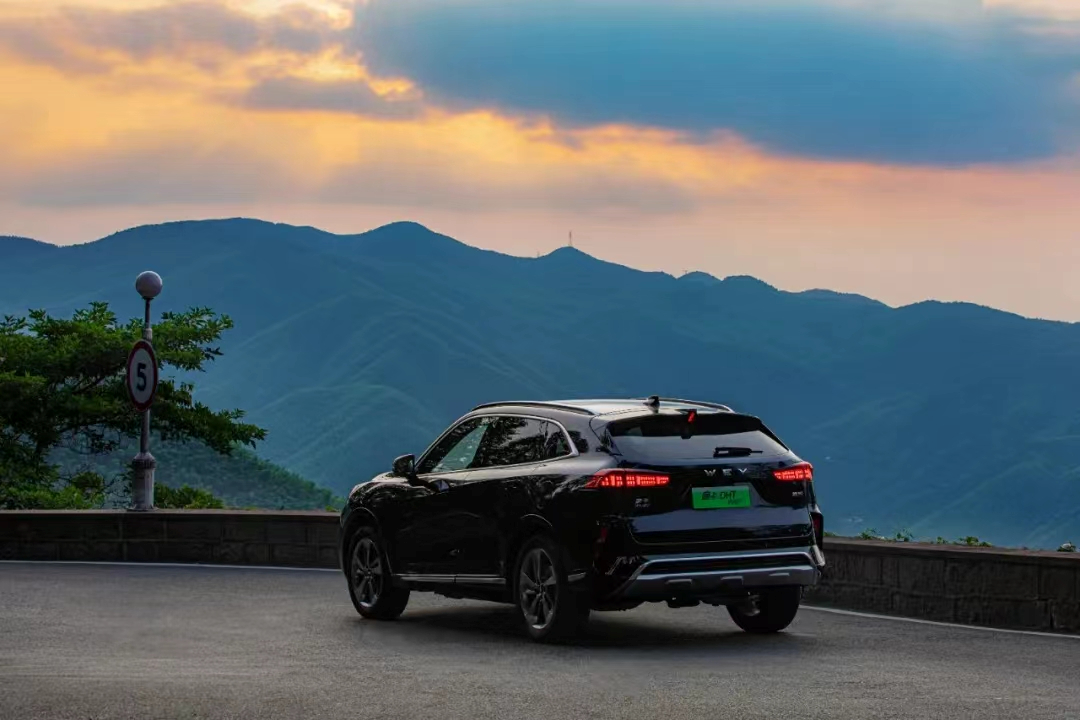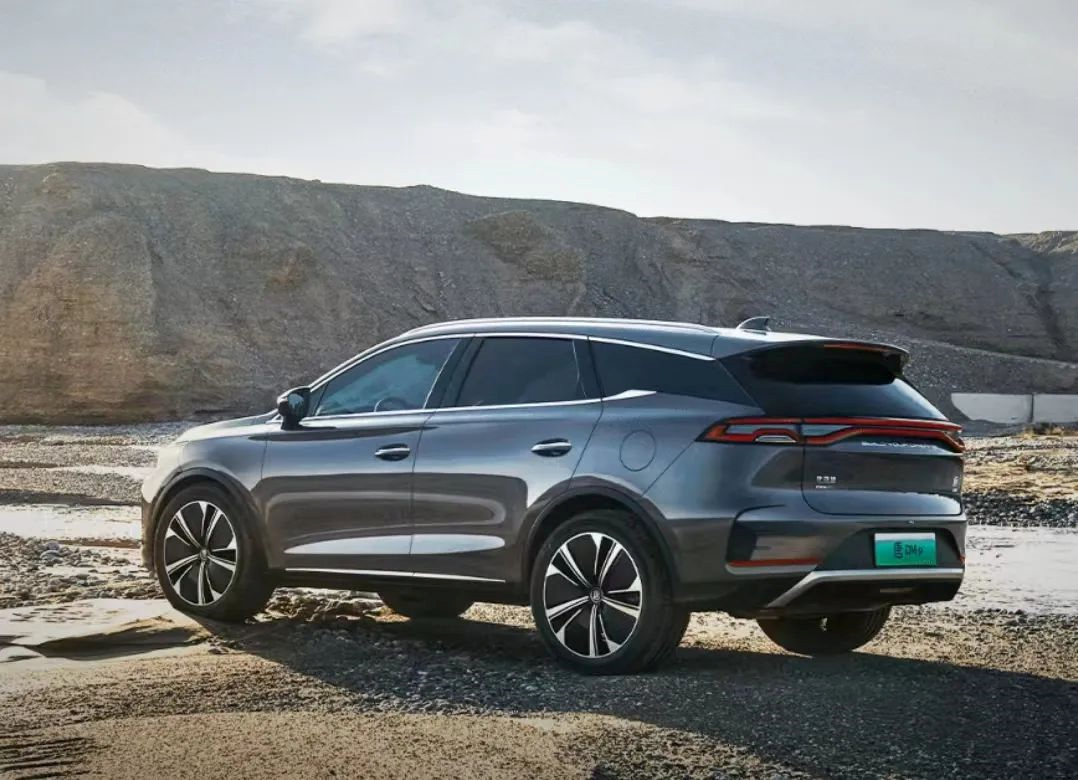Article by Xiong Xing
Edited by Leng Zelin
The most popular hardcore off-road vehicle in China this year is undoubtedly the Tank 300.
For a long time, heavy-duty off-road vehicles have been a niche market, with most people driving Land Rover, Land Cruiser, Mercedes-Benz G-Class, or PRADO, Pajero, etc. The relatively high economic threshold has become an important factor in this small market.
However, the market has always lacked disruptors. The Tank 300 entered this niche market with a starting price of less than 200,000 yuan, with an effect no less than that of Lei Jun’s “1999 make a friend” campaign.
From February to May this year, the Tank 300 model was temporarily halted for production and more than 30 cities and counties suspended shipments due to the double blow of the epidemic and supply chain shutdown. Although the sales data during this period was not ideal, the sales of Tank 300 in January and June of this year both exceeded 10,000 units, and its cumulative unfulfilled orders once reached 140,000 units, indicating its continued popularity.
Not only “unavailable,” there is also “unaffordable.” The Tank 300’s fuel consumption in urban areas, ranging from 13L to 100km, is only a “city version” of consumption for most users. However, only users who have traversed rugged terrain can experience what is called “hardcore consumption,” especially when oil prices surged not long ago.
Undeniably, the hardcore off-road market has been ignited by the Tank 300, and not only has Great Wall followed up with the Tank 500, but also its peers pay more attention to this niche field than before. Recently, BYD confirmed that its first high-end brand car will be a hardcore off-road vehicle comparable to the Mercedes-Benz G-Class; The Jetour TX, which will be launched next year with a gasoline and hybrid version, and the Tank 300HEV and 500PHEV will also be launched at the Chengdu Auto Show.
Trends in the New Hardcore Off-road Vehicle
Firstly, can new energy vehicles have the ability to be “wild”?
The characteristics of classic hardcore off-road vehicles include: non-load-bearing body, front and rear hard axles, mechanical transfer case, and low-speed high-torque engine.
The electric motor has the characteristic of instantaneous full torque output, which can perfectly compensate for the “defects” of traditional fuel engines. The electronic control can also replace some mechanical transmission systems. In theory, new energy can reduce transmission losses and improve power performance for hardcore off-road, making it easy to be “wild.”
Reducing some mechanical transmission structures means that the product’s failure rate will be relatively lower, and the cost of use and maintenance will also be lower. This is a win-win situation for car companies and users. However, looking back at the entire auto market, compared to new energy SUVs, cars, and sports cars that are already running on the street, new energy hardcore off-road vehicles are undoubtedly “late.” Why?The most important reason is battery safety. Tesla, widely recognized as having a first-class battery management system, has fine design considerations for cooling, flame-retardant, exhaust, and waterproofing. However, like other new energy products that are not well-known, it can catch fire. The advanced technology cannot solve the common problem for the time being.
Off-road condition is much more complicated than the paved road, and bumping, water wading scenarios are hardcore tests. Currently, many new energy vehicles can achieve dust-proof and water-resistant IP67 that means fully preventing foreign objects and dust from entering and soaking in water up to 1 meter deep for 30 minutes.
The possibility of malfunctions is high once such scenes occur except for enjoying the scenery. Unlike traditional gasoline-powered vehicles, which are mainly mechanical, new energy vehicles are not something that can be easily fixed by “finding a master” when they stop working in the wild.
In the context of using vehicles in the wild, energy supplementing is an important problem. It is quite unrealistic to ask manufacturers to lay charging networks for their vehicles in the wilderness or let users wait for charging in environments exposed to wind and sun.
All things considered, hybrid seems to be the best solution currently. Most PHEV versions on the market are more economical than the gasoline-powered versions of the same model. For example, the Wei Pai Mocha DHT version has a theoretical range of 1000 kilometers and a fuel tank of 55 liters, while the gasoline-powered version of Mocha NEDC has a comprehensive fuel consumption of 7 liters with a 70-liter fuel tank. Roughly calculated, assuming both versions have a theoretical range of 1000 kilometers, the hybrid version’s fuel consumption is approximately 22% lower.
Another idea is that the fuel tank size of both versions is the same, but the hybrid version has a longer theoretical range, such as the fuel-powered version and DM-i version of BYD Song PLUS. While the Tank 300HEV version’s theoretical fuel consumption decreases by 25%, although this data will be discounted in actual use, the peak torque reaches 648 Nm, 1.67 times that of its current gasoline-powered version, which is visually improved.
Saving fuel costs, easing range anxiety, and improving power are indeed able to solve users’ key pain points in hardcore off-road conditions. What remains is safety considerations.
To cope with the harsh working conditions of hardcore off-road, Tank’s hybrid architecture places the battery pack on top of the rear beam of the vehicle and adds a rear anti-collision alloy beam to the end of the battery pack.
External defenses can be summarized as anti-collision, while internal defenses are for reducing volume. HEV version models do not have a strong demand for high-density and high-capacity batteries, with a battery capacity of only 1.7 kWh. The battery capacity of the PHEV version is also relatively small, just 19.94 kWh, while the battery capacity of the Mocha PHEV is 39.67 kWh. Reducing battery capacity can shrink the volume of the battery pack and also reduces the chance of collisions.
 The market prospects for domestic hardcore off-road vehicles may already be evident. In the first half of the year, Great Wall Motors sold a total of 518,500 vehicles, a year-on-year decrease of 16%. Tank sales rose by 63.56% to 54,094 units. Ora and Tank are the only two brands of Great Wall Motors that have grown against the trend, and Tank still has a large number of orders backlogged. With the launch of hybrid models in the second half of the year, there will be a certain amount of sales release through users’ conversion or direct pick-up.
The market prospects for domestic hardcore off-road vehicles may already be evident. In the first half of the year, Great Wall Motors sold a total of 518,500 vehicles, a year-on-year decrease of 16%. Tank sales rose by 63.56% to 54,094 units. Ora and Tank are the only two brands of Great Wall Motors that have grown against the trend, and Tank still has a large number of orders backlogged. With the launch of hybrid models in the second half of the year, there will be a certain amount of sales release through users’ conversion or direct pick-up.
According to data from the China Passenger Car Association, Tank 300 and Tank 500 ranked first and second in domestic hardcore off-road vehicle sales in July, with 9,955 and 2,518 units sold respectively. However, the ninth-ranked Beijing BJ80 only sold 44 units, and the total sales from the second to ninth place is less than the first.
The hardcore off-road vehicle market is not large, but the Matthew Effect is too obvious, meaning the success or failure of a model makes a world of difference, and there is no significant middle ground.
Chery and BYD, which are about to enter this market, will face the problem of big brands making niche products. They may learn from Great Wall Motors but have different technical directions and brand tones, leading to different choices and finished products, but they all have the same goal of electrification.
Niche Thinking of Big Brands
For Great Wall Motors with the hardcore off-road vehicle gene, the 3.0T engine is a natural product. Subjectively, Tank’s brand tone is also doomed to enter the hardcore off-road vehicle field, and embracing new energy has objective reasons.
According to the data from the Ministry of Industry and Information Technology, in 2016, Great Wall Motors ranked first on the list of companies with above average fuel consumption at 234,500 negative points, and earned only 555 points in terms of new energy. Last year, its fuel consumption points “turned positive,” and its new energy points have been positive for three consecutive years. In the first half of the year, Great Wall Motors sold only 63,590 new energy vehicles, so it can only continue to increase its embrace of new energy to avoid repeating past mistakes.
According to the Ministry of Industry and Information Technology’s prediction, gas consumption regulations, points assessment, and vehicle scale will become more stringent in the future, and the points will become tightly balanced. Ora, a pure electric car, only sold 59,000 units in the first half of the year, with limited contribution to points. Great Wall’s Haval, Tank, Cannon, and WEY all have many “heavyweight” models that are not pure electric and cannot earn five points per vehicle.
Traditional automakers are all facing the same policies to varying degrees, with different circumstances and vastly different demands. For example, BYD has left the hardcore off-road product to its new high-end subsidiary, while Chery has “delegated” production to its mid- to low-end JETOUR brand.
In terms of the brand, domestic manufacturers all have high aspirations, and BYD is undoubtedly relatively urgent. The Dynasty has stabilized its sales but cannot further explore the market, and TANG cannot take off either. BYD hopes to explore higher price points with its new subsidiary. DM-i, blade batteries, and the E platform provide BYD with enough new energy strength to raise the price of its new car to between 800,000 and 1.5 million yuan, targeting the Mercedes-Benz G-Class.
However, someone still needs to foot the bill. Today’s high-end consumers are different from the past, as exemplified by the discontinuation of the Mercedes G350. If a new car can match the product strength of the big G, can hundreds of thousands of RMB in price difference really make up for the brand gap? The Tank 300 has demonstrated that even for tough off-road vehicles, being able to compete off-beat is still a necessary foundation for success.
Strictly speaking, there is currently no direct competitor to BYD in the field of new energy luxury off-road vehicles, while Chery is different. Chery promotes hard off-road capabilities through its main cost-effective brand, Jetour, which is likely to result in direct competition with the Tank 300. Chery, which previously had no experience in hard off-road vehicles, will also use the new energy Dongfeng to improve its product matrix. At the Chengdu Auto Show, Chery will launch the “DP-i hybrid architecture” to pave the way for future products.
If the Jetour TX is a standard hard off-road vehicle, it will deviate from the current Jetour product price range. By leveraging Jetour’s reputation acquired in recent years, it is highly likely to create the “first hard off-road vehicle for young people.” Although “creating niche products with a mass mindset” seems to contradict theory, Chery’s positioning of Jetour is to be a high-volume brand, so making niche products into a national mass market is the goal. Perhaps “leaning towards tigers” shows the mentality, rather than aiming for the Tank.
Geely, which also has no experience in hard off-road vehicles, chose to start conservatively by positioning its radar as a “travel” brand. This ambiguous term implies that they want to avoid direct hardcore product comparisons, while still being able to launch hardcore products at any time. With a large product line, Geely can sit back and wait for the sub-segment market to heat up before deciding on what product form to enter with.
Whether it’s the Tank 300 that has ignited the market or follow-up products, it’s difficult to define them with conventional “niche” thinking. The Tank 300 City Edition, apart from its four-wheel drive system, retains the non-load-bearing body of the off-road version, with approach and departure angles still uncompromised. It balances mild off-road and urban performance, with a rugged exterior and exquisite interior, making it difficult to define its clientele as either middle-aged men with beards or young women with unique styles.
Perhaps, in the trend toward new energy hard off-road vehicles, traditional thinking about niche products is no longer perfectly applicable, while manufacturers will still come up with unique strategies for differentiation. On the one hand, consumers will have more choices; on the other hand, high-end products from domestic automakers will enter a new price range.
Like the rise of domestic smartphones in recent years, leading to increasingly high starting prices for flagship models. Will domestic automakers following in the footsteps of smartphone manufacturers make the era of price-performance ratio-led user enjoyment a thing of the past?
This article is a translation by ChatGPT of a Chinese report from 42HOW. If you have any questions about it, please email bd@42how.com.
